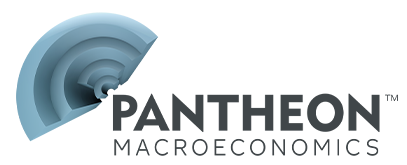US Publications
Below is a list of our US Publications for the last 6 months. If you are looking for reports older than 6 months please email info@pantheonmacro.com, or contact your account rep
Please use the filters on the right to search for a specific date or topic.
RISING UNEMPLOYMENT TO SPUR FURTHER FED EASING…
- …INFLATION WILL STILL FALL UNDER MOST TARIFF SCENARIOS
Samuel TombsUS
- Ignore the Q4 plunge in the BLS new tenant rent index; it is usually revised up sharply...
- …CPI housing inflation still looks set to slow this year, contributing to a fall in overall core inflation.
- California wildfires lifted initial claims last week, but the pick-up in continuing claims has deeper roots.
Samuel TombsUS
- The federal hiring freeze likely will reduce monthly payroll growth by about 15K from February to April.
- Federal jobs account for just 2% of total payrolls, making a very big drag on the headline unlikely.
- Measures of economic policy uncertainty have shot up; that’s usually a bad sign for payroll growth too.
Samuel TombsUS
- The tariff outlook is uncertain, but core PCE inflation probably will be lower at the end of 2025 than now.
- The upward impact on prices likely will be mitigated by a diversion in trade flows, among other factors.
- Beware forecasts for January payrolls derived from Homebase data, which are extremely seasonal.
Samuel TombsUS
Manufacturing still looks fragile despite this improvement.
Oliver Allen (Senior US Economist)US
- Tariffs are inflationary, despite claims to the contrary, and we see other upside risks during Trump 2.0…
- …But a repeat of the runaway inflation seen in the latter half of the 1970s seems very unlikely.
- The Fed provides a far more effective backstop against sustained inflation now than it did back then.
Samuel TombsUS
Spending still very strong, but likely to soften.
Oliver Allen (Senior US Economist)US
Disinflation still progressing; core PCE deflator likely up just 0.2%.
Samuel TombsUS
- Retail sales were solid in December, and consumers’ real spending likely rose by about 3.5% in Q4.
- Some temporary factors, however, probably are supporting sales; we expect a mid-year lull in spending.
- Governor Waller still envisages easing policy further in H1; we think rising layoffs will spur action in March.
Samuel TombsUS
Massive rise in airline fares leaves core PCE deflator set to rise by 0.3%.
Samuel TombsUS
Politics still making the NFIB harder to read.
Oliver Allen (Senior US Economist)US
- Reassuringly calm CPI data imply the core PCE deflator likely rose by just 0.19% in December.
- CPI auto prices will fall back in Q1, and leading indicators point to a lower core services inflation ahead.
- Retail sales probably were strong again in December, but a softer spell likely lies ahead.
Samuel TombsUS
- PPI data combined with our CPI forecast suggest core PCE inflation likely rose to 3.0% in December...
- ...But the PPI report also contained some reassuring signals for the near-term inflation outlook.
- Further improvement in the NFIB in December likely driven by politics rather than by fundamentals.
Samuel TombsUS
- We look for a 0.5% increase in the December headline CPI, and a fifth straight 0.3% rise in the core.
- Strong holiday demand boosted prices for gasoline, air transportation and accommodation.
- Rent and auto insurance prices likely rebounded after below-trend increases in November.
Samuel TombsUS
Tariff worries likely pushing up inflation expectations.
Oliver Allen (Senior US Economist)US
- December payroll growth likely will be revised to a slower pace, given the usual skew in late responses.
- The trend is revealed only from data spanning about six months; payroll growth was lower in H2 than H1.
- Homebase data make payroll forecasts less accurate; they are a poor guide even to hospitality payrolls.
Samuel TombsUS
Claims are noisy at the turn of the year; forward-looking indicators point to a renewed rise ahead.
Samuel TombsUS
- Option pricing indicates markets will move sharply today if payrolls deviate much from the consensus...
- ...But payrolls have become noisier as the response rate has declined; trends take six months to emerge.
- Auto sales have been lifted by storms, tariff talk and a dip in auto loan rates; expect sales to falter mid-year.
Samuel TombsUS
Don't panic about the prices index just yet.
Oliver Allen (Senior US Economist)US
